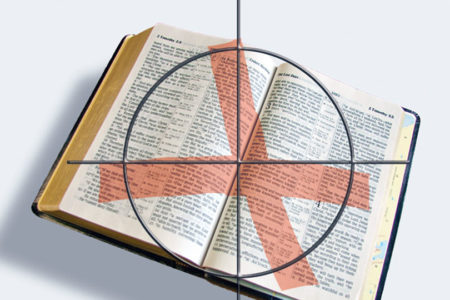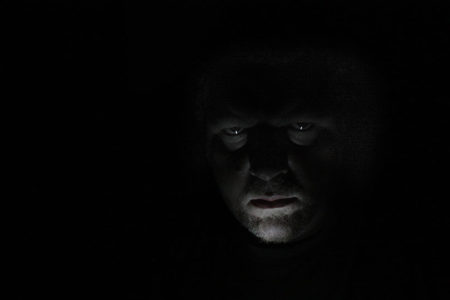The Restrainer, the Rebel, the Rejecters
The beginning of 2 Thessalonians 2 makes it clear that at least two events will precede the advent of the Day of the Lord: the arrival of the great apostasy and the unveiling of the “man of sin” (v. 3). Paul reminded the Thessalonians that he had taught them these truths when he had ministered among them previously.
In verses 6–12 the apostle went on to remind them of something else that they already knew, which is actually a third event that must precede the Day of the Lord. As he had written in verse 3, the revelation of the man of sin must take place first, but, in the meantime, there is something holding back the tide of lawlessness that will erupt when he is revealed. That restrainer must be removed before the man of sin appears in his diabolical role as arch-deceiver. What (or who) is this restrainer, and what will happen when it (or he) is removed?
Removal of the Restrainer (vv. 6–7)
And now ye know what restraineth that he might be revealed in his time. For the mystery of iniquity doth already work; only he who now hindereth will continue to hinder until he be taken out of the way.
Clarifying the identity of this hinderer or restrainer is vital to a correct understanding of this passage and crucial for our understanding of end-time events. Before we attempt to identify what is keeping the man of sin from being revealed, we must note some important facts about these verses.
First, the present tense of verse 6 (i.e., “now you know what is restraining”) shows that the arresting force or person was already in operation in Paul’s day. From this passage it is also clear that the restrainer will operate until the Antichrist appears on the scene.
Second, the restrainer is described with a neuter expression in verse 6 but with a masculine form in verse 7. This change indicates that the restrainer can be spoken of both as a thing and as a person.
Third, the restraining influence will be removed at the appropriate time. “His time” in verse 6 may be either God’s time or the Antichrist’s time. The emphasis, however, is that at an appointed time in the prophetic program, the restrainer will be removed, allowing the rebel to launch his rebellion publicly on the earth.
Thus far we have seen that there are actually three events that must precede the Day of the Lord. They are, in order, the apostasy, the removal of the restrainer, and the unveiling of the man of sin. Let us now attempt to more specifically identify what or who the restrainer is.
A number of proposals have been set forth as to the identity of the restrainer. Around AD 200, Tertullian suggested that it was the Roman Empire, particularly in its role of maintaining law and order. While Paul did affirm such a role for the higher powers mentioned in Romans 13:1–7 and Titus 3:1, it is doubtful that this is the correct interpretation because the Roman government faded 1,500 years ago, and the man of sin did not appear before then and still has not appeared. The predicted events simply did not occur.
Another similar interpretation is that the restrainer is the principle of human government in general, exercising its restraint on aberrant human behavior. This view is also doubtful because human government has often failed in restraining evil acts and at times has even encouraged them by its lack of moral restraints. Furthermore, the prophetic Scriptures are clear that human governments will still be present after the advent of the man of sin. Consider, for example, the statements in Matthew 25:31 and following and Revelation 16:12–16. Governments will be in existence during the Day of the Lord.
Another novel idea that has emerged in recent years is that the restrainer is the archangel Michael, who supposedly will stand aside and allow Israel to be persecuted during the “time of Jacob’s trouble” (Jn. 30:7). This view, however, first appeared in quasi-Christian magical papyri of the third century AD and has never been espoused by any reputable theologian. It is based on a total misunderstanding and erroneous translation of Daniel 12:1, which actually states just the opposite view—that Michael will “stand up” for Israel at that time, not abandon them.
Thus the restrainer can be described both in neuter and masculine terms and must have sufficient supernatural power to restrain the satanic mystery of lawlessness. The Holy Spirit is the only person who fits all of these characteristics and is the best possible identity of the restrainer. The word spirit is neuter in its grammatical form (pneuma) but describes one who is actually a person (“he” in vv. 6–7). But how does the Holy Spirit presently restrain the mystery of lawlessness? Through Christians, the body of Christ, whom He indwells and through whom He works in society to hold back the swelling tide of lawless living.
But how, then, will He “be taken out of the way” (v. 7) when the church leaves the earth in the Rapture? He will not be removed in a complete sense but in His unique ministry of restraining lawlessness through God’s people (see a parallel in Gen. 6:3). He will leave in the distinctive sense in which He came at Pentecost. Just as He was active in saving people before Acts 2, so He will be active during the Day of the Lord (see, for example, Rev. 7). But He will cease His restraining ministry through the church, since it will no longer exist due to its absence.
The removal of the restrainer at the Rapture of the church must therefore precede the Day of the Lord—a truth confirmed by many other passages in the New Testament (e.g., Jn. 14:1–3; 1 Th. 5:9; Rev. 3:10). In the context of 2 Thessalonians 2, the readers should have known that they were not in the Tribulation period because the Rapture had not yet occurred.
Revelation of the Rebel (vv. 8–9)
And then shall that wicked one be revealed, whom the Lord shall consume with the spirit of his mouth, and shall destroy with the brightness of his coming, Even him whose coming is after the working of Satan with all power and signs and lying wonders.
In verses 3–4 Paul mentioned the blasphemous activities of the man of sin, who will exalt himself as deity in the Jerusalem Temple. In verse 9 the apostle expounded on this theme, stating that the man of sin will employ demonic, miracle-working signs to aid his efforts.
Passages in Revelation illustrate how this man of sin will develop.
The dragon (Satan himself) will energize the beast (another of the Antichrist’s titles), and this incarnation of evil will demand worldwide worship of himself for a period of three and a half years (Rev. 13:1–8). The false prophet, his religious prime minister, will also employ satanic signs to cause seemingly miraculous events to validate the Antichrist’s claims (Rev. 13:11–18).
A modern-day application of this end-time event is appropriate when applied to current religious hucksters claiming apparently miraculous events in their ministries. We must exercise extreme caution in concluding that such actions validate those ministries as being from God. In addition to the tricks and shams so many of these self-proclaimed ministers/prophets employ, there also is the possibility of satanic signs being performed to deceive the unwary. Paul warned of such religious charlatans in 2 Corinthians 11:13–15:
For such are false apostles, deceitful workers, transforming themselves into the apostles of Christ. And no marvel; for Satan himself is transformed into an angel of light. Therefore, it is no great thing if his ministers also be transformed as the ministers of righteousness, whose end shall be according to their works.
Thankfully, the reign of this man of sin will be relatively brief—three and a half years to be exact (see Rev. 13:5). At His glorious coming, the Son of Man will consume this evil one by a single word from His mouth (v. 8). A graphic description of the Antichrist’s defeat and punishment by the King of kings is given in Revelation 19:20–21:
And the beast was taken, and with him the false prophet that wrought miracles before him, with which he deceived them that had received the mark of the beast, and them that worshiped his image. These both were cast alive into a lake of fire burning with brimstone. And the remnant were slain with the sword of him that sat upon the horse, which sword proceeded out of his mouth; and all the fowls were filled with their flesh.
Retribution For The Rejecters (vv. 10–12)
And with all deceivableness of unrighteousness in them that perish, because they received not the love of the truth, that they might be saved. And for this cause God shall send them strong delusion, that they should believe the lie, That they all might be judged who believed not the truth, but had pleasure in unrighteousness.
There will be people on the earth in that day who will be deceived by the signs displayed by the man of sin. Because they will reject the truth when it is available, they will be judged in a twofold manner. First, they will be sent a “strong delusion” by the Lord, which will cause them to believe “the lie” (v. 11). That lie is that man can be worshiped as God (v. 4). The second aspect of their judgment is that they will be damned and will perish forever. Some interpreters believe that this passage is also a warning that those who have willfully rejected Christ before the Rapture will not have a second chance to be saved after the Rapture. Whatever be the case, Scripture is clear about the urgency of believing in Christ now: “Behold, now is the accepted time; behold, now is the day of salvation” (2 Cor. 6:2).
In light of this study, it is now possible to construct a simple chronology of the events 2 Thessalonians 2 describes.
- “The mystery of iniquity” is at work now (v. 7), even though it is being restrained.
- The great apostasy from the faith will occur at an unspecified time (v. 3).
- The restrainer (i.e., the Holy Spirit in the church) will be removed from the earth (v. 7).
- The man of sin will then be revealed (v. 8) and will initiate the beginning of the Day of the Lord.
- The man of sin will embark on a brief career of radical blasphemy, accompanied by satanic signs (vv. 2:4, 2:9–10).
- The Lord will come in glory and destroy the man of sin (v. 8).
- Those unsaved who reject the truth will be further deluded by the Lord as punishment and will perish (vv. 11–12).
A sober reflection on these matters must cause us to ponder the following question: Have I received Christ by faith and been indwelt by His Spirit as part of His body? If you have, you can, with joy, anticipate the blessed hope of being with Christ while judgment is being poured out on an unbelieving world (see Lk. 21:36; 1 Th. 5:9).









Formerly I believed people who clearly understand the gospel who reject Christ today could not be saved after the rapture. A very conservative and solid Bible-teaching pastor convinced me from this passage that my belief was incorrect. There will be other chances for them unless and until they either take the mark of the beast or they bow down and worship either of the two beasts; once that has occurred their fate and doom is sealed.